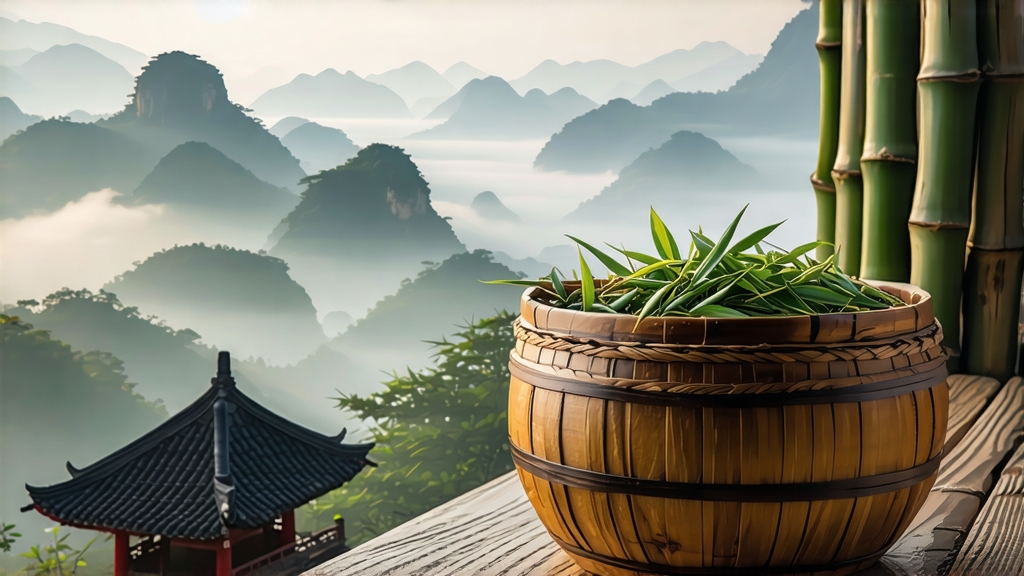
Tucked above the perpetual cloud belt of Sichuan’s Meng Ding mountain, Meng Ding Huang Ya—literally “Meng Ding Yellow Bud”—is the quiet aristocrat of Chinese tea. While green teas grab export headlines and pu-erhs age into investment portfolios, this yellow tea has spent fourteen centuries perfecting the art of discretion. It was the first tea ever listed as an imperial tribute during the Tang dynasty (618-907 CE), yet today even seasoned drinkers in China’s coastal cities greet its name with a polite blink. The following 2,000 words are an invitation to meet the forgotten bud, to understand why emperors once guarded it like jade, and to learn how a mere three grams can still perfume an entire afternoon.
-
Geography: where clouds knead the leaf
Meng Ding sits on the southwestern rim of the Sichuan basin, its peaks nudging 1,450 m. The mountain catches both the humid breath of the basin and the cold downdrafts of the Tibetan plateau, creating a 280-day fog season. Photosynthetic intensity drops, amino acids accumulate, and the leaf grows almost languidly, yielding a bud so tender it can be pierced by a fingernail. Local saying: “One day of Meng Ding fog equals three days of spring elsewhere.” The soil is a friable yellow loam rich in selenium, washed by mineral springs that once fed the irrigation system of the Dujiangyan, the 3rd-century BCE engineering marvel still functioning downstream. Tea gardens are scattered across seven terraces known as the “Seven Stars,” each terrace named after an asterism and harvested in sequence so that the mountain itself becomes a lunisolar calendar. -
A 1,400-year chronicle in ten sips
Chronicles credit the Buddhist monk Wu Lizhen with planting the first seven bushes on Meng Ding in 53 CE, making them arguably the oldest cultivated tea trees on record. By the Tang dynasty the buds were compressed into cakes, lacquered, and escorted to Chang’an by relay riders who changed horses every ten li. Song dynasty (960-1279) bureaucrats shifted to loose-leaf, inventing the “yellowing” step that would define the category. Ming (1368-1644) emperors, famously frugal, abolished cake tribute but kept Meng Ding Huang Ya on the roster, valuing its “sweet emptiness” that soothed the liver after too much mutton. The Qing (1644-1912) expanded the tribute quota to 400 kg, then the 1911 revolution closed the imperial office overnight. For the next seventy years the tea survived as a provincial cadre gift until Deng Xiaoping’s 1980 market reforms allowed private kilns to revive the craft. Today only 1,200 mu (80 hectares) are certified authentic, producing about eight tons a year—less than a single container of Keemun. -
Taxonomy: yellow tea’s quiet rebellion
Western cuppers often mistake yellow tea for a quirky green. Genetically they share the same cultivars—mostly Sichuan local #9 and #20—but diverge through a non-enzymatic oxidation phase called men huang, “sealed yellowing.” After kill-green the leaf is kept at 28–32 °C and 65 % humidity for 4–7 hours, allowing residual moisture and polyphenols to reconfigure. Chlorophyll degrades into pheophytin, catechins dimerize, and a hay-like aroma drifts toward chestnut, mimicking the soft edges of white tea yet retaining green tea’s vibrancy. The result is a third flavor axis: greener than oolong, rounder than green, quieter than both. -
Harvest calendar: the 72-hour window
Plucking begins when the mountain azalea bursts, usually between 20 March and 5 April. Only the “flag-bud” set—unopened tip plus half-open first leaf—is accepted. Pickers work 4 a.m. to 9 a.m., before valley thermals lift the fog and the leaf’s surface temperature exceeds 12 °C. A skilled picker fills a 500 g bamboo basket in 90 minutes; 3.5 kg of fresh buds yield 1 kg of finished tea. Once picked, the leaf must reach the village workshop within two hours or the yellowing clock becomes unpredictable. -
Craft: the five breaths
Villagers describe processing as “five breaths” the leaf must take:
a. Sha Qing (Kill-green) – 180 °C wok, 4 minutes,